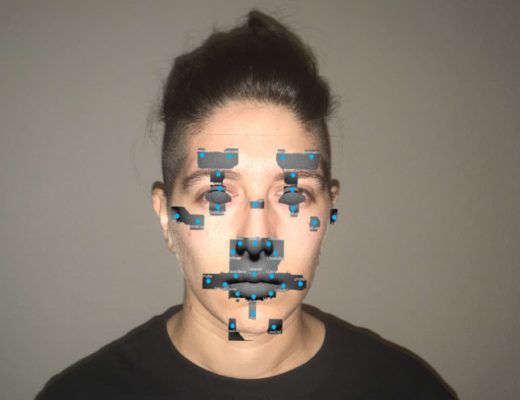By Josh Inocéncio
For the first time in two years, I felt Appalachia’s old tug as I stepped out of my rental car in Tennessee and the first gush of pine trees whisked through my nostrils. Pines are prolific in the U.S., but their potency increases once you approach the foothills of Appalachia. Kentucky was now less than a state away, just over the ominous Jellico Mountain (not to be mistaken, as a child’s mind did years ago, with Jericho Mountain).
Like many writers excavating their pasts, I returned to Kentucky—a site of my childhood—to collect oral histories from my mother’s side on front porches and curvy roads. Here, I’d begin work on the final play in my trilogy that confronts collisions between ethnicity and sexuality. This third installment—Chocolate Gravy & White Jesus—focuses on my eastern Kentucky roots with all their attending myths and mysticism, along with the one word that hasn’t left my mind since I conceived this play: horror.
I had packed three books with me: a 2017 road atlas, a journal, and It by Stephen King—which I had decided to read with the advent of the new film.
My childhood was texturized by horror films, particularly adaptations of King’s work. People still gasp when they hear I watched the original Carrie and It before age 10, The Shining by age 12, along with a host of other classics in between. In Kentucky, I would always spend a night at my Aunt Judy’s and we’d huddle under blankets while watching a horror movie on her wood-paneled TV.
I say they left traces; my friend says, “more like craters in your subconscious.”
But amid the frights, there’s something immensely relatable about many of King’s novels. He frequently crafts writer characters whose work is entrenched in a kind of spiritual or psychological exorcism. In The Shining, Jack Torrance (unsuccessfully) uses his position as caretaker of the Overlook hotel to overcome alcoholism and write a new play. In ‘Salem’s Lot, novelist Ben Mears returns to his childhood home of four years to research the Marsten House where he once saw an undead man. And in It, best-selling author Bill Denbrough buries the memories of his brother Georgie’s violent death by churning out horror fiction.
It is the first King novel I’d picked up, and while it didn’t inspire the conception of my play, personal parallels eerily emerged as I read the monolith over the summer.
For one, the bulk of the novel’s action takes place from May to August—the same period it took me to read It. Every 27 years, the monster that shapeshifts into Pennywise the Dancing Clown strikes in Derry, Maine, bringing back the Loser’s Club to face their childhood fears. In the days before I turned 27, I went to Kentucky to wrangle my own personal demons and find peace with the place. It’s no secret that Kentucky isn’t the friendliest state for gay people, and I’ve had many rough conversations with family in the region. Finally, I started seeing blue and orange balloons soon before I read the grisly passage where the adult characters find their friend Stan’s severed head surrounded by balloons of the same color.
But, as though the novel was playing pranks on me, I greeted most of these little connections with a chuckle. After all, I chased horror content in my youth (I used to watch horror films right before bed in hopes they’d grant me lucid dreams). And here I was again, heading to eastern Kentucky, after two years ago saying I might never go back.
Alongside hunger for horror films and fiction, my Grams told stories from the holler when I was growing up. Folk tales tucked amid the hills about a pair of floating eyes and a “wild thing” banging the side of the house.
My dad never shied away from scaring me with tales about Dr. Smith on the hill and the homeless woman in the cellar. Until I was eight years old, Grams lived in a well-exposed trailer on a hill. But shortly after her mother died, she bought an old house nestled in the crook of a hill—a downward slope on one side leading to a street and an upward slope on the other coming to a crescendo with Smith’s house.
Despite the coziness of this five-bedroom home, I’d often choose to fall asleep in front of the TV on the living room couch. The back bedrooms went pitch black at night with nothing but the moon looming in the window. But in the living room, I’d use the flashing television colors as a night light while peeping every now and then at the basement door—just to make sure that woman didn’t stir the cellar dust and creep up the stairs.
Grams, with no intention of frightening me, always shared the strange things she’d witnessed out where streetlights don’t shine. Usually, we’d be around the kitchen table after dinner while the laundry machines hummed down in the cellar.
She could recollect a little girl that visited her in the dead of night. Grams said, “that child was a-staring at me by my bedside, soakin’ wet. And, honey, I tell ya, I broke into tongues right there, speakin’ to the Lord, squirmin’ in the sheets, and consumed by the Spirit, hopin’ she’d leave. Didn’t know if she was a demon or ghost none.”
And she told me once, “when the kids was little and I was still married to Myles, he worked days a-fixin’ cars and I worked nights in a yarn factory spinnin’ machines. Most mornings, I’d come home just before Myles and the kids woke up to get ready for the day. But one time, just after the sun rose, I walked inside the house and there was Myles, sitting on the couch in his underwear and a cap, a-sweatin’, and clinging to one of his rifles. I stood in the doorway with my mouth a-hangin’ damn near the floor and he didn’t look at me nor say a darn word.
“What on earth is wrong, honey?” Grams finally asked.
Grandpa Myles looked over at her and in between breaths, said, “You didn’t see it outside?”
“See what?”
“There’s somethin’ out there. Been circling the house all night. You didn’t see nothin’?”
“There ain’t nothin’ out there, Myles. I just walked up the driveway-”
“Oh, no, I heard it. Hittin’ the sides of the house. Thump, thump, thump. All night. Startin’ just after Lenora and Ray dozed to sleep. I don’t think they heard it, and, Faye, I’m not surprised a bit you didn’t hear or see it either. Whatever was out there, it was just for me.”
Nobody ever challenged Grams’ stories either. My Paps would stay silent, my mom would sometimes corroborate, and I’d just listen. My dad is a little skeptical, city fellow that he is, and the further we go out onto country roads, the tighter he clings to his pistol. But I don’t think there’s much that man-made tools can do to harm the things Grams has seen.
The veneer of London, Kentucky is quaint with a quintessentially American Main Street that slides up and down hills—not unlike Derry. And as with Derry—or any other small town in King’s topography of Maine—the manifest monsters are tied to the darkness that lurks within us.
“It is a trademark of Mr. King’s to use supernatural events to expose and inflame wounds already festering in small towns,” The Economist noted in an article written around the release of the new film adaptation of It. “In It, the protagonists are dealing with homophobia, racism, sexual abuse and anti-Semitism before Pennywise the Dancing Clown emerges from the sewers and begins ripping limbs off children.”
The core of King’s project is demonstrating the symbiotic relationship between humans and demons—how we allow them to feed on us. These anxieties about the holler frothed in my mind as I drove toward Kentucky again, trading the bayou marshes of the South with the thickly cloaked pines of Appalachia. Not the first road-trip to the region as an out gay man, but certainly the first in confidence.
When I went to Kentucky in 2015, memories still gnawed at my soul—particularly the lingering images of apocalypse from my Pentecostal youth. The air is clearer near London, but it was always harder to breathe—and certain smells aroused decaying fears. There was the terror of what skulked around Grams’ house, as well as what consequences I might endure if I ever came out as queer. Pentecostals, the Christians who speak in tongues, preach three visions of hellfire and the Rapture for every one of charity. If there was anything to light Grams’ back bedrooms after sundown, it was the image of the Devil’s flames licking my feet anytime I’d dream about an attractive boy my age.
Despite all I know now, you’d still get me to believe quite a few things out in the woods—but it’s astounding what you can cast out when you’re at peace with yourself. There was little to fear when I arrived this time. A wave of turmoil had dissipated with time, and Grams and I cheered a few glasses of bourbon.
Now, King’s novels are an addiction (or a temporary ritual?), particularly the ones that depict writers. As I’m writing this, I’m less than 200 pages from finishing ‘Salem’s Lot—a novel that’s caused me to gasp mid-page no less than three times. On the docket are also Misery, The Dark Half, and Lisey’s Story.
As a child, rusty pipes spooked me because I thought Pennywise might be swimming beneath them. After watching the miniseries, I’d shower with both eyes locked on the drain. And we have creatures of our own, too—like the thumping beast outside the house that, after hearing that story, I always listened for as I fell asleep.
Now that I’m a “grown up,” these traces—or “craters”—haven’t fully bid adieu, but I can sleep a bit more soundly in the pitch dark night.







